Have you ever seen a black white-tailed deer? It’s a truly rare sighting, but such deer do exist. Here’s your complete guide to these animals.
White-tailed deer are the most familiar large animal over much of North America. They live on farms, in suburbs, even in cities. In many regions, there are far too many of them, posing threats to conservation and even human health.
But deer are also a source of endless fascination for naturalists, hunters and backyard wildlife watchers, me most definitely included.
Despite also being one of the most studied wild animals in the world, whitetails can still surprise. Take their color variations. White deer – the subject of a blog I wrote previously – have long been the subject of lore and myth. White deer are not common, but they are conspicuous. People observe them regularly, many of them reporting them here.
But did you know there were also black deer? This coloration is even rarer than white. In fact, it is so unusual that this color variant remains little studied.
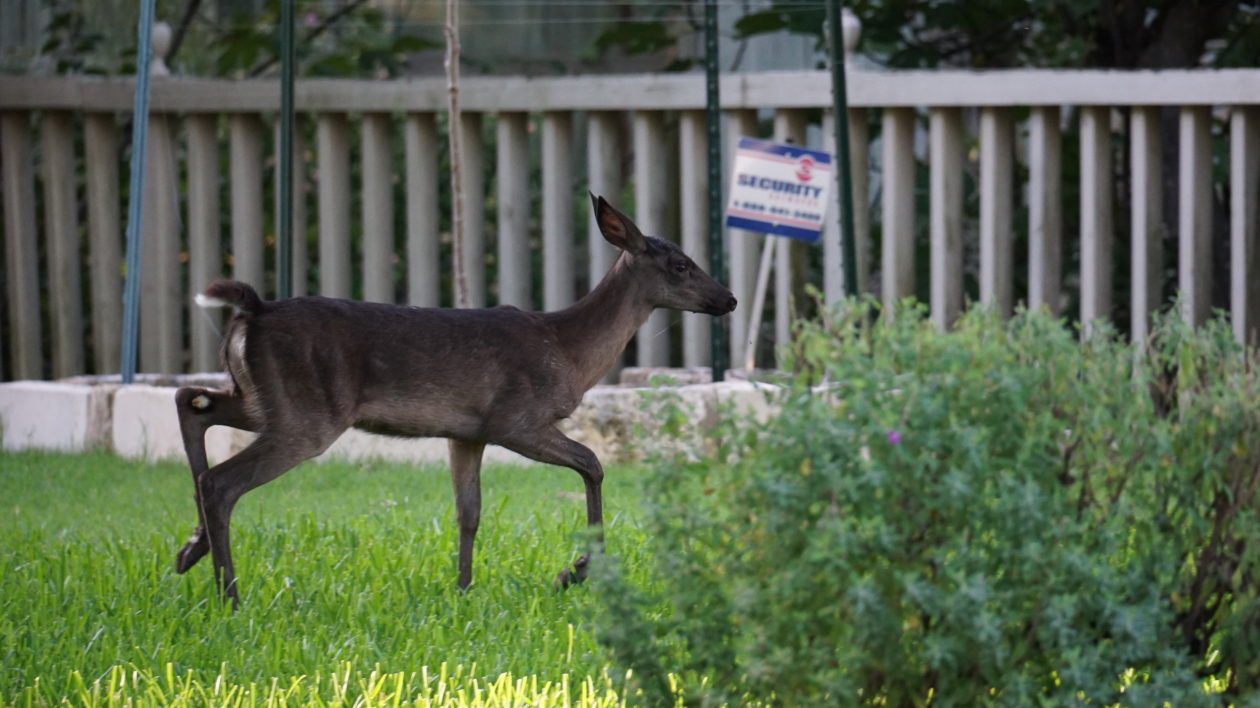
What is a Black Deer?
Many wild animals have variations in colors. In white-tailed deer, melanism – as the coloration is known – is a recessive genetic trait that can be inherited. It causes an excess of dark pigment, believed to be due to mutations in the melanicortin 1 receptor gene (MC1R). The deer appear a dark chocolate brown or black, and they have a fairly uniform coloration over their entire body.
Melanistic deer have been reported from 29 states, but they are never common. In one region of Texas, Texas Tech University found that melanistic deer make up about 8.5 percent of the population, by far the biggest concentration of these animals known.
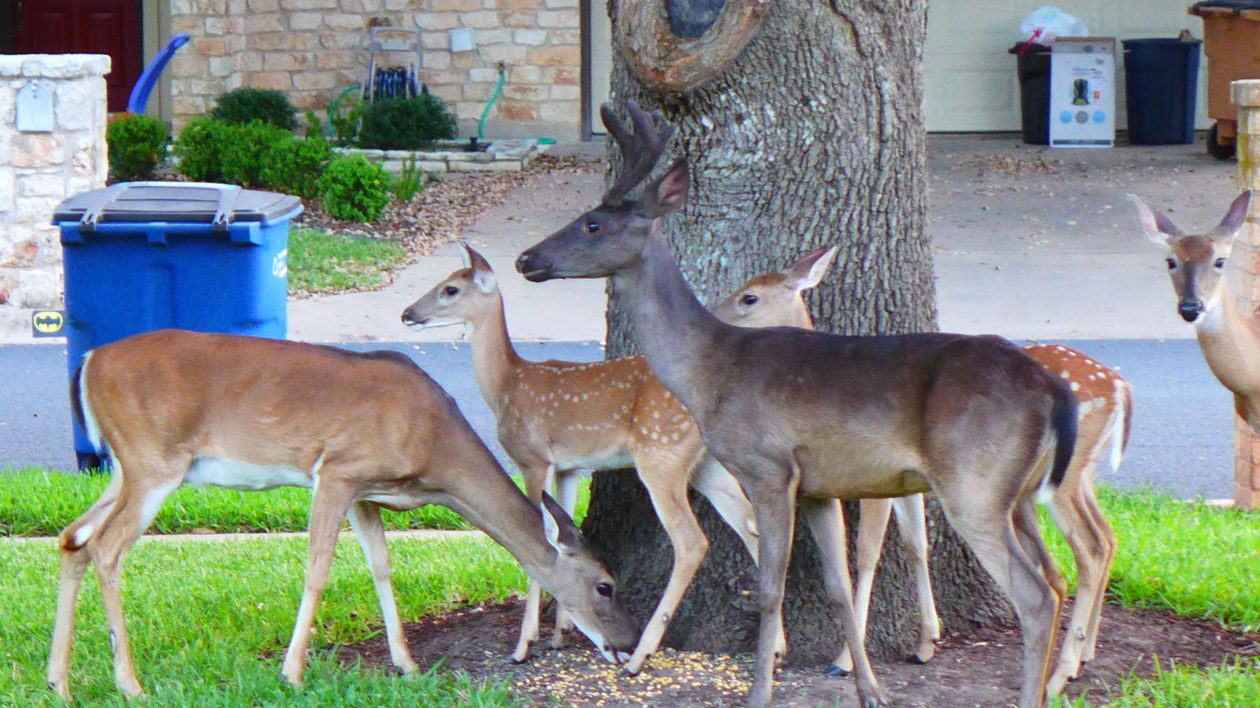
Wildlife photographer and deer expert Leonard Lee Rue III, in his excellent reference book The Deer of North America, reported that in the mid-1900s, a concentration of melanistic deer was found in Union County, Pennsylvania. I have spent a fair amount if time in the woods in this area, always hopeful, but I have never seen a melanistic deer there, nor have I heard of others being spotted.
David Schroeder, who generously allowed me to use his photographs for this story, photographed a melanistic deer on his property that was the twin of a “normal” colored fawn. Neighbors alleged that this deer was sired by a melanistic buck, although Schroeder never saw this animal. However, this year another melanistic fawn has appeared on a neighboring property.
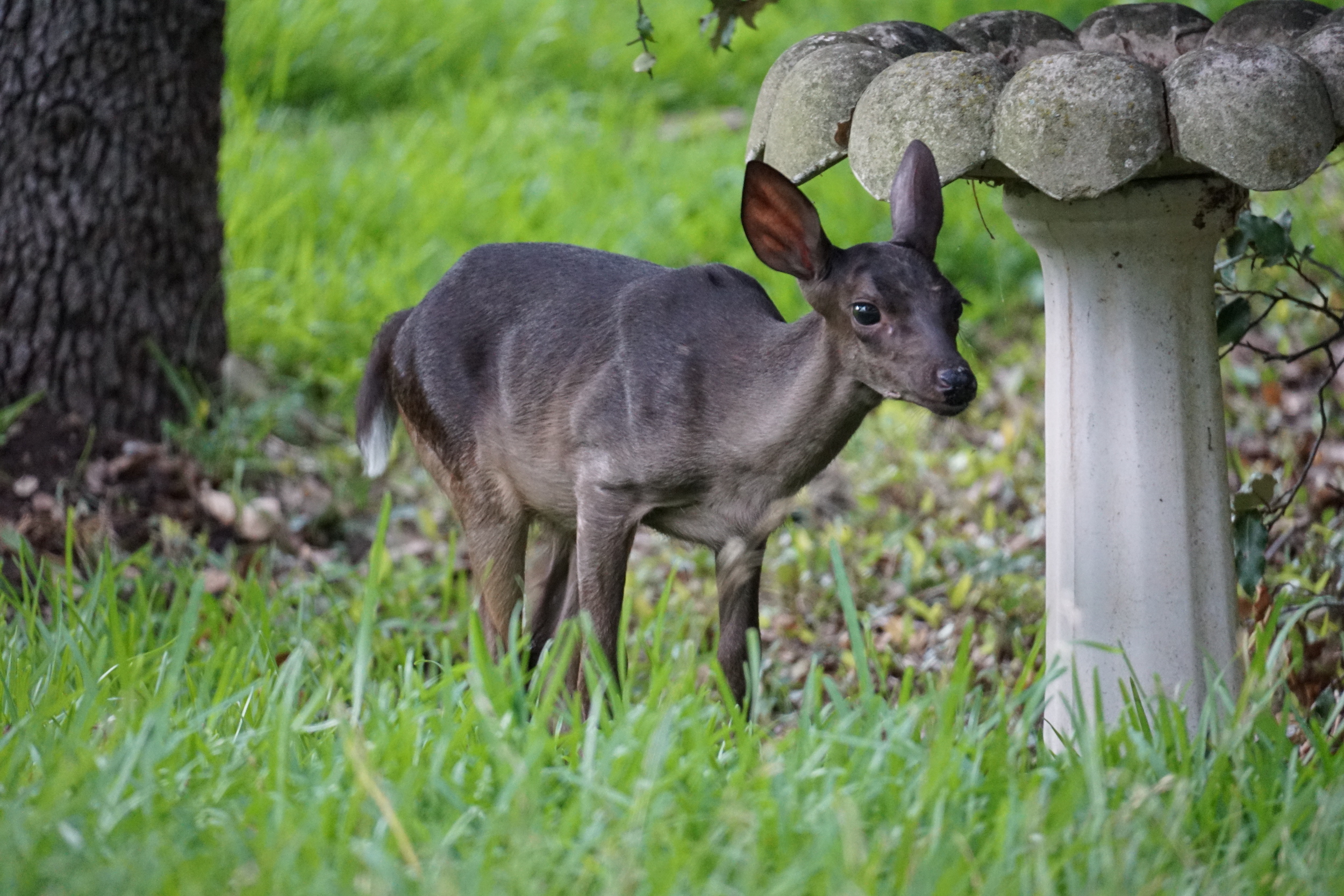


Black Panthers and Black Squirrels
Many other animals can be melanistic. Perhaps most well known are melanistic wild cats such as leopards and jaguars (melanistic individuals in both species are often commonly called “black panthers”). There are at least 11 other species of wild cats that exhibit melanism.
In both leopards and jaguars, according to the conservation group Panthera, about 10 percent of the population is melanistic. But this varies by region. Black leopards, for instance, are rare in Africa, although camera traps have recently confirmed individuals in Kenya. But on the Malayan Peninsula, researchers estimate 95 percent of leopards could be melanistic.
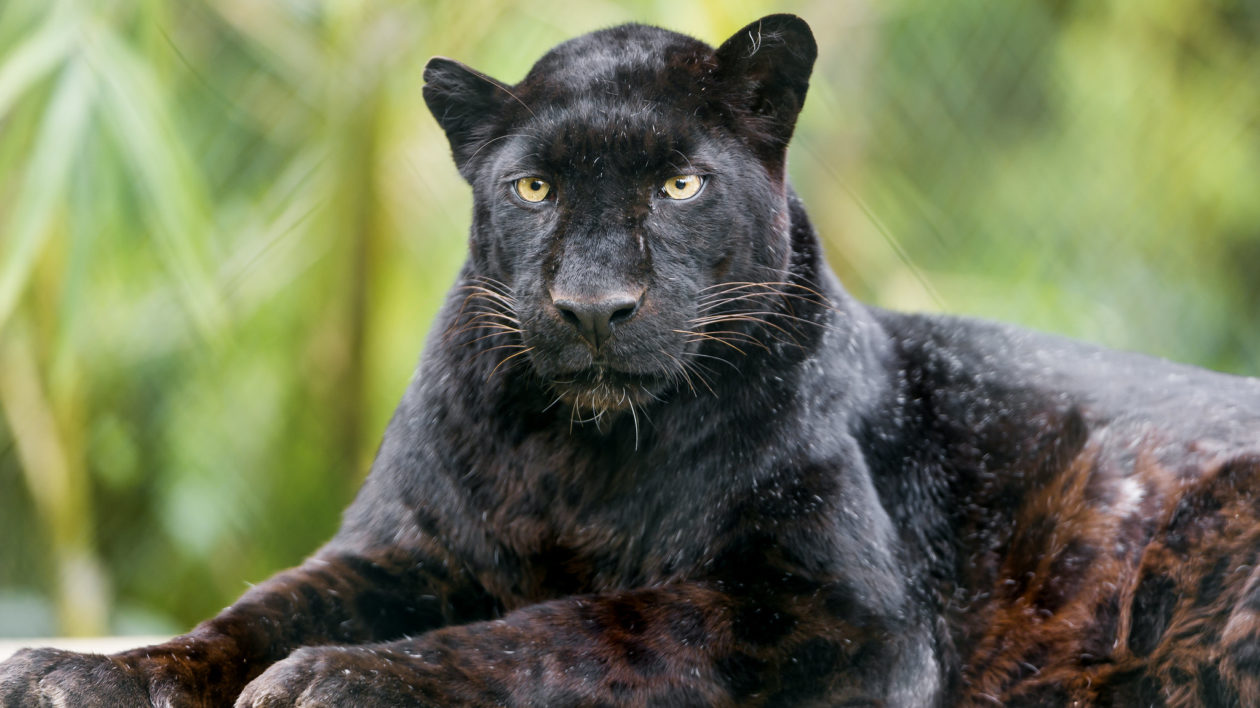
In North America, black squirrels (in several species) are fairly well known animals. In some communities, black squirrels are prevalent and a popular tourist attraction. Some researchers have argued that at one point – when eastern North America was covered in thick, old-growth forest – black squirrels were much more common and may have even been the predominant color. They have based this on historical records, and believe it may have allowed squirrels to blend in better with the thick brush.
Some believe the melanistic leopards of the Malayan Peninsula may be better adapted to blending into the thick rainforest there.
Could something similar have been true for melanistic whitetails? At one point, much white-tailed deer habitat would have been old-growth forest, so perhaps there were more black deer. As deer adapted to new habitat – small woodlots, farms, suburbs – darker coloration would not have conferred advantages. This is all conjecture, of course, although Texas Tech researchers have hypothesized that the 8-county area with lots of melanistic whitetails may be due to the thick undergrowth that characterize the region’s valleys.
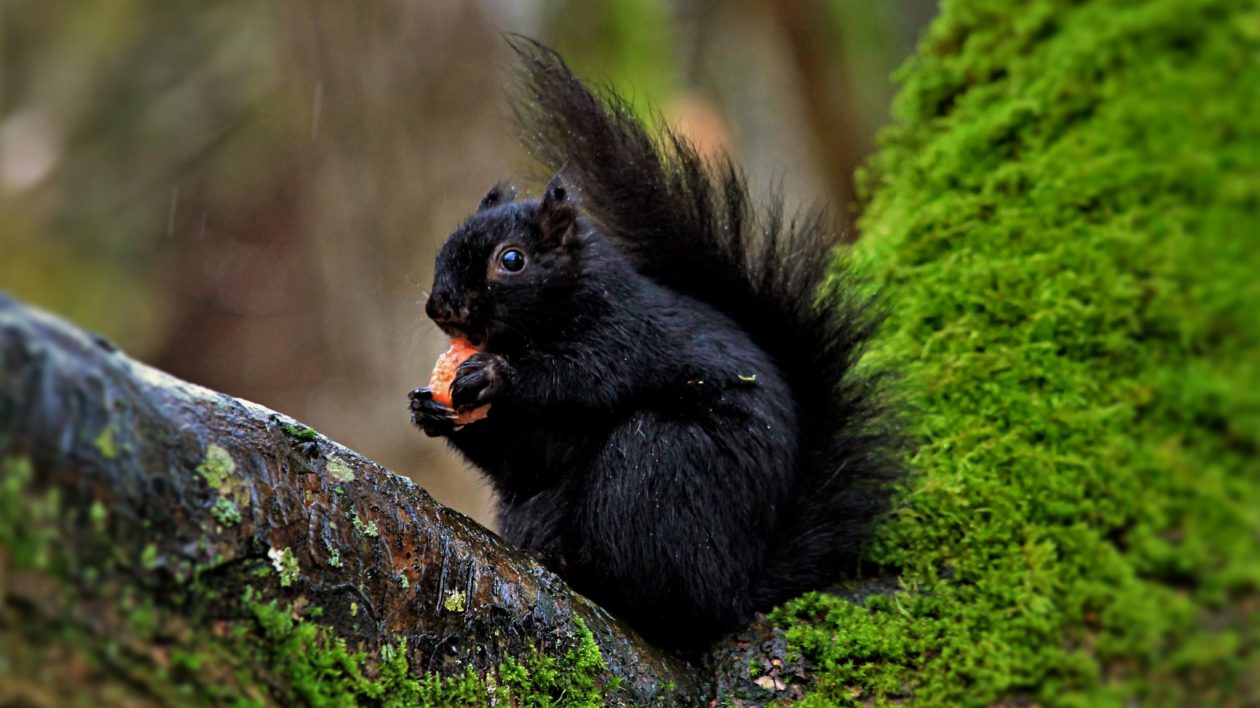
Mistaken Identity?
Seeing a melanistic whitetail requires an extraordinary amount of luck. And if you do see one, you possibly have to rule out a complicating factor: non-native deer species, a couple of of which can be dark brown or black in coloration.
North America has a variety of non-native deer that have been released or escaped, and now roam at large. Sika deer are fairly common in parts of Maryland and Virginia, including protected areas like Chincoteague National Wildlife Refuge and Blackwater National Wildlife Refuge. These deer are not melanistic, but a very dark brown.
However, from a distance, they often look black. They are much smaller than whitetails, have very different antlers, and have a thicker coat. My guide to non-native deer can help you tell the difference.

Fallow deer are more confusing. This European deer species is common on game ranches, petting zoos and wildlife parks, and occasionally escapes. It can be found roaming free in Texas and other states. Perhaps because fallow deer were bred extensively in deer parks, they exhibit a variety of coat colorations, including black. Melanism in fallow deer is much more common than in other species.
I had a moment of excitement once in Texas, when I saw a dark-colored deer moving through the trees. I was near the area where melanistic whitetails are more common. But as the animal entered an open field, it revealed itself as a fallow deer. A new species for my North America mammal list, but a non-native one.
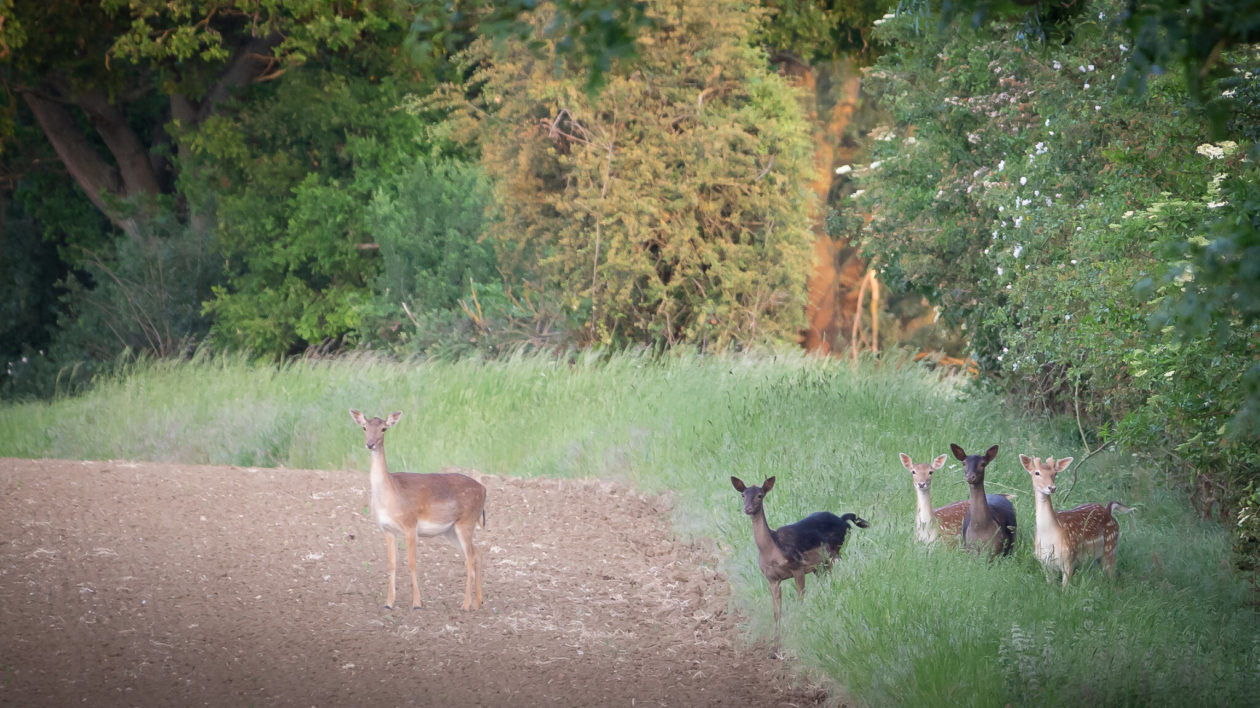
The Melanistic Deer of the Anthropocene
There is a chance that melanistic deer become a much more regular sight in the future. I offer this not as hope, but as a warning. We live in what many conservationists call the Anthropocene, the era when humans dominate the earth. And one of the hallmarks of the Anthropocene is the tendency to tinker, including with wild animals.
Selective breeding of weird-colored wildlife has become a trend. Many people consider white tigers to be rare, special animals – but they are bred and raised entirely for human entertainment.
In South Africa, it has become routine to breed hoofed mammals for specific colors, which are then marketed to the trophy hunting industry. Black springboks, once relatively uncommon, are now found on many game ranches in the country. Black impalas have likewise become an increasingly common sight on ranches. Golden wildebeest, white lions, white blesboks and other “Frankenstein freaks of nature” command premium prices from hunters.
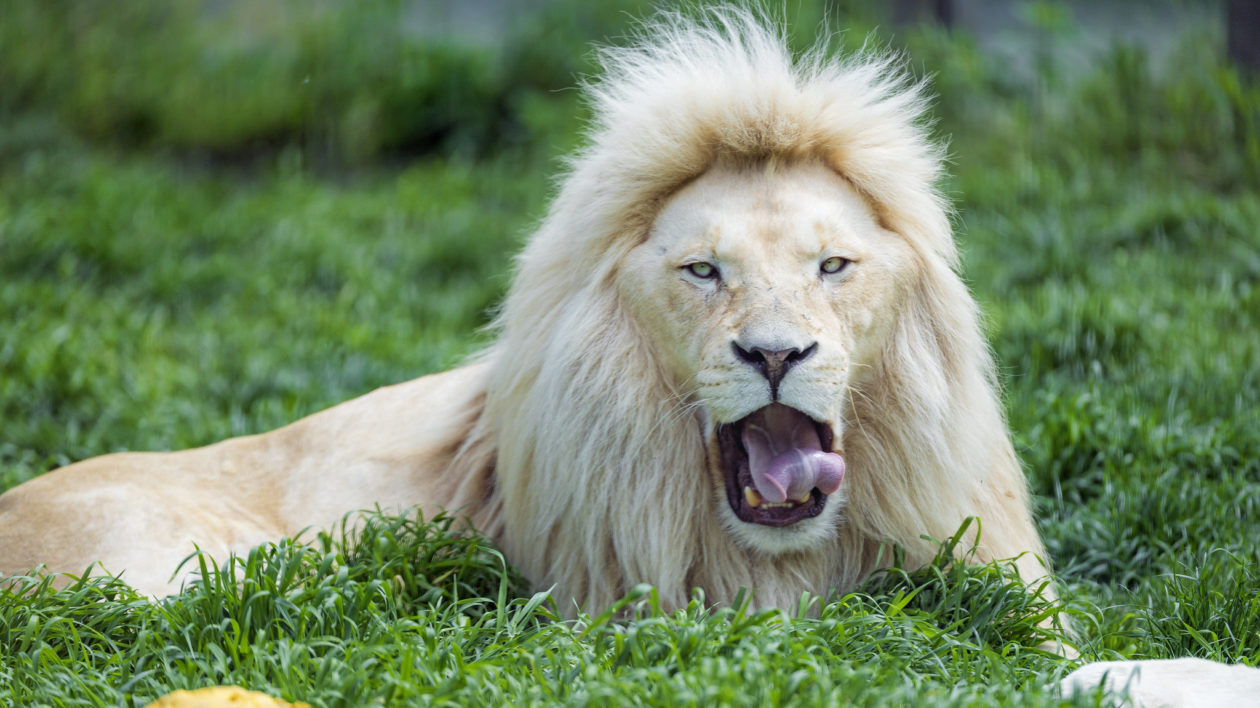
This process is rightly condemned by many, including ethical hunters. I hunt, but I fail to see how there can be any justification for breeding wild animals like livestock. But unfortunately, it’s clear there is a market for selectively bred color variations in big game animals.
And that brings us to whitetails. White-tailed deer are also intensively bred, including for freakish-sized antlers in the canned hunting industry. The white-tailed deer was one of the first wild animals ever cloned.
Given the rarity of melanistic deer, how long is it before such animals are selectively bred and offered to hunters? And then how long until they sneak out of their fenced enclosures and become more common in the wild? This is not far-fetched if you follow the wildlife breeding that is already happening.
As dismaying as all this is, I see in it as underlying sign that people are drawn to diversity. In a world where large mammals grow increasingly rarer, we fill the void with our own diverse menagerie of white tigers and golden antelopes. Strange and bizarre beasts of our own making.
A better solution would be to work for the diversity that is still here among us, and to better understand the beauty and mystery of even common animals.
That’s why I sincerely hope that melanistic whitetails remain a rare, and special, sight – and one that you may be lucky enough to see in your own neighborhood.
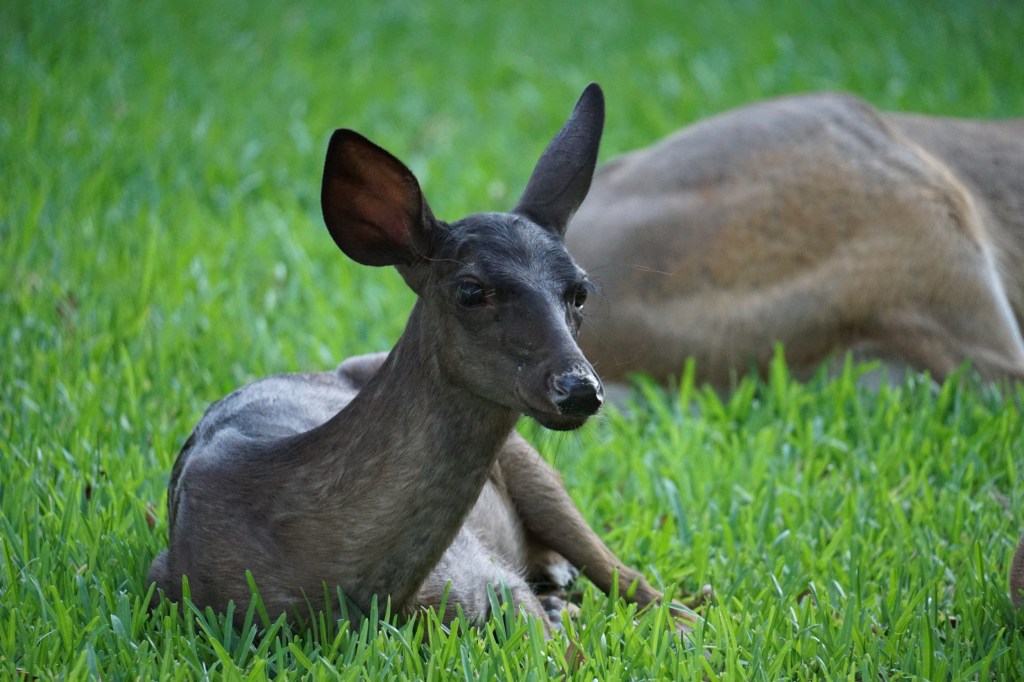



I went to work early one morning and there was a large Black Buck and his girls across the road. I was late getting inside, I just sat and watched them .
Hi! I saw 3 this afternoon. They must have been late season triplets, as they were still fairly small. Two dark ones and the third so dark he looked like a miniature mule. I was driving down the road and two ran in front of me. I was so shocked I slammed on the brakes. I’m used to seeing deer, as we have many in the neighborhood, but that dark color was what caused me to stop. The two had joined their siblings in the yard where they ran and I was able to get a good look at all three. I live in Pennsylvania, South of Pittsburgh. I’m 63, grew up running in the woods and have seen many White-tail deer, but this is my first time seeing a melanistic deer. Very exciting!
I saw one today a black white tail deer. In Harperfield Ohio. I was amazed at this. I hope it will be back so I can take a picture.
Hi hope your having a good day today to. I see black swuirles every day now to. But on October 5th I saw 3 black deer in my yard. That was amazing to. I never new there were black deer at all. I love in Rothbury Mi 49452. I’m not giving out my whole address cause I don’t want a lot of people showing up to the house I live in either
I live in Texas. I saw a black tailed doe several years ago. Her coat wasn’t really dark, but darker than a white tail.
She was stunning.
I thought she might have escaped from one of the places around here that raises them for hunting.
But since she was with white tails, maybe she was just melanistic.
There was a place across the road that had a captive mule deer population. So that might have made sense.
My mom got so excited when she saw those mule deer. There haven’t been any around these parts in a long time.
We were on a back road, so I turned the truck off, and we just sat and watched them.
Eventually a few wandered over to where we were. Mom started crying.
I understood.
Eventually, we had to go on.
Mom watched the deer as long as she could.
The deer watched us as long as they could.
Still makes me both happy and sad when I think about it.
Thank you
My mom and I saw a black 🦌 deer today on route to Kentucky on st rt 141 coming from close to patriot, Ohio.
I have melanistic white tail on our property in Michigan in the city of Grand Rapids. Seems we have a mom with fawns and possibly some yearlings. It’s an area near some waterway connecting out to orchards and fertile with turkey and white tail. I am hoping their coloring is not detrimental to being spotted crossing the busy streets in the city. Deer here are so use to people you can be 50 ft away and they don’t move. They walk on my front-walkway during broad daylight and come up to the house to look in windows.
Incredibly adaptive animals.
I saw 2 black deer the other day. I couldn’t get my cell camera out in time. I only caught the back of one as they took off into shrub and woods. They were a little small. One was a baby and the other was the mother. They walked out into our street from our neighbors yard. They stopped and looked at me. I about jumped off my chair thinking at first it was a dog. After they looked at me I saw they were actually deer. My husband and I live out in the country woods area of Gaffney, SC. People actually used to rent our single wide to go hunting Anyway I found it to be very interesting. It was during the beginning of my prayer time.
I can’t see when this was written, actually I just found it in September 2020. It is now June 28, 2023 and I have seen for the first time in my 63 years of life a black fawn. We have a herd of deer where I work, and I talk to them all the time I feed them well one morning I thought I was going crazy at work 15 days straight and I saw this little black Vaughn actually it appears the mama had twins one regular and one black so I’ve been watching for it again and I finally have seen him every night for the last four nights even this morning I am completely amazed yes well the other night I actually had. My light shine on him and the phone is not black at all. It’s chocolate yes, the chocolate color , I’m so fascinated every time I see it and I’m also happy that the mama brings it over to where I feed them so anyways I just wanted to tell somebody that they really are in a South Central Texas. I work in San Marcos Texas and I’m so afraid that someone is going to try to take that cute little thing away from there , anyways, I enjoy watching it and hopefully I get to see you grow up there with the rest of our dear
My husband saw a black doe today in Newcomerstown Ohio.
We live in eastern Ontario, Canada. (Perth, ont.) My son saw ablack deerout his window yesterday morning. It was with his family and eating cedar just a few feet from his door.
Seen an adult and yearling black deer yesterday in Taylor County, Wisconsin on Hwy E north of Curtiss. First time ever seeing that! I didn’t know they existed. I’ll keep my camera with me next time to hopefully get a picture of them the next time I through that area which is often.
I viewed a black deer yesterday. It was spooky. I have pictures.
I saw a black deer a week ago in far north San Antonio. He jumped from a wooded (preserved area) into the west access road near Stone Oak and TPC parkway. I stopped, didn’t honk, just watched for about a minute before he went back into the woods instead toward the hamburger place he looked at first. He had a small rack about the size of 10 human fingers held cupped open and upright with thumbs touching.